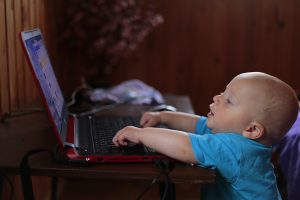Creating inclusive and supportive social environments in schools and communities is crucial for promoting the social integration and interaction of children with disabilities. This endeavor involves a multifaceted approach, incorporating a variety of strategies to ensure every child feels accepted and valued. Here, we delve deeper into practical strategies, providing a comprehensive guide to fostering inclusivity in educational and community settings. Implementing inclusive education practices is a cornerstone of this strategy. It’s about more than just placing children with disabilities in mainstream classrooms; it’s about ensuring their full participation. Teachers need to be equipped with the skills and resources to adapt their teaching methods to accommodate different learning needs. For example, using Universal Design for Learning (UDL) principles can help create lesson plans that are accessible to all students. This might include providing materials in various formats, such as audio, visual, and tactile, to cater to diverse learning preferences.
Emphasize Peer Support and Collaboration
Peer support programs are another effective strategy. These programs can be structured as mentorships, where older students or peers act as buddies to children with disabilities. In one successful example, a middle school implemented a buddy system where each student with a disability was paired with a peer mentor. The mentors attended workshops to learn about different disabilities and effective ways to support their buddies. This program not only helped students with disabilities feel more integrated but also fostered a culture of empathy and understanding school-wide.
Encouraging Group Activities
Schools can also organize group activities that encourage collaboration among all students. Activities like cooperative learning projects, where students work in diverse teams, can help break down social barriers. One high school introduced a project-based learning initiative where mixed-ability groups tackled real-world problems. This not only improved academic outcomes but also strengthened social bonds across diverse student groups. To further enhance these initiatives, schools can host regular “Inclusion Days,” where students participate in activities specifically designed to promote understanding and camaraderie among students of all abilities.
Provide Training and Awareness Programs
Training and awareness programs are essential for building an inclusive culture. These programs should be ongoing and involve all stakeholders—teachers, students, parents, and community members. Workshops and seminars focusing on disability awareness can be complemented by practical training sessions. For instance, role-playing exercises can help participants experience the challenges faced by individuals with disabilities, fostering empathy and understanding.
Leveraging Technology for Awareness
Technology can be a powerful tool in these efforts. Virtual reality (VR) simulations that mimic the experiences of individuals with different disabilities can provide participants with a deeper understanding of the challenges these individuals face daily. Schools can partner with tech companies to integrate VR experiences into their training programs, offering a modern approach to fostering inclusivity. Additionally, schools might consider using online platforms to host webinars and interactive sessions, ensuring that geographical barriers do not limit participation.
Offer Social Skills Training and Peer Mediation
Social skills training is crucial for helping children with disabilities navigate social interactions. These programs can be tailored to address specific needs, such as communication challenges, understanding social cues, or managing emotions. Schools can develop individualized social skills curricula, working with speech therapists or social workers to create targeted interventions. For instance, regular “social clubs” during lunch breaks can provide safe spaces for students to practice social skills in a structured environment.
Implementing Peer Mediation Programs
Peer mediation programs can also play a critical role. These programs train students to mediate conflicts among their peers, promoting a peaceful and inclusive school environment. In one elementary school, a peer mediation program was launched where students acted as mediators during recess and lunch breaks. This not only helped resolve conflicts but also empowered students with disabilities to take active roles in their community. By encouraging students with disabilities to become mediators, schools reinforce the idea that these students are integral parts of the community, capable of leadership and conflict resolution.
Collaborate with Community Organizations
Collaboration with community organizations is vital for providing comprehensive support to children with disabilities. Schools can partner with local disability advocacy groups, therapy centers, and recreational programs to extend support beyond the classroom. For instance, a school district partnered with a local autism support group to offer weekend social clubs where children with autism could engage in fun, structured activities, fostering social skills and friendships.
Engaging Families in the Process
Engaging families in these collaborations is equally important. Organizing regular meetings and workshops for parents can help them understand the resources available and how to advocate for their children effectively. In one community, a parent-led support group was established, providing a platform for parents to share experiences and resources, further strengthening the support network for children with disabilities. Schools might also consider creating a “Family Advisory Council” consisting of parents, educators, and community leaders to provide ongoing feedback and support for inclusive initiatives.
Ensure Physical Accessibility and Inclusive Activities
Physical accessibility is a fundamental aspect of inclusivity. Schools should conduct regular accessibility audits to identify and address barriers. This might include installing ramps, widening doorways, or providing assistive listening devices in classrooms. A school district in a suburban area conducted a comprehensive audit and subsequently implemented changes that included accessible playground equipment and sensory-friendly classrooms, greatly enhancing the participation of students with disabilities.
Designing Inclusive Extracurricular Activities
Inclusive extracurricular activities are equally important. Schools can offer clubs and sports teams that accommodate various abilities. For example, a high school introduced a unified sports program where students with and without disabilities competed together on the same teams, promoting teamwork and inclusivity. Schools might also consider organizing annual inclusive sports days, where students of all abilities participate in adapted games and activities, fostering a sense of community and belonging.
Addressing Common Challenges and Mistakes
While implementing these strategies, schools and communities may encounter challenges. One common mistake is treating inclusivity as a one-time training session rather than an ongoing process. To avoid this, schools should embed inclusivity into their culture, policies, and daily practices. Regular feedback from students, parents, and staff can help identify areas for improvement and ensure that inclusivity remains a priority.
Adapting to Diverse Needs
Another challenge is the tendency to adopt a one-size-fits-all approach. Each child with a disability is unique, with their own strengths and challenges. Schools should adopt a flexible approach, tailoring accommodations and supports to meet individual needs. This might involve using Individualized Education Programs (IEPs) to set specific goals and track progress. Schools should also consider regular reviews of IEPs, ensuring that they accurately reflect each student’s evolving needs and goals.
Creating a Culture of Inclusion
Ultimately, the goal is to create a culture of inclusion where diversity is celebrated, and every student feels valued. This involves a commitment from all community members to foster an environment of respect and acceptance. Regular school-wide events that celebrate diversity, such as multicultural days or disability awareness weeks, can reinforce this culture.
Encouraging Student-Led Initiatives
Empowering students to take the lead in promoting inclusivity can also be impactful. Student councils or leadership groups can spearhead initiatives, such as awareness campaigns or inclusive events, giving students a sense of ownership and responsibility in creating a welcoming environment. Additionally, schools can introduce “Inclusion Ambassadors,” students who are trained and motivated to promote inclusivity and support their peers throughout the school year.
Expanding on Teacher and Staff Training
While initial training is important, ongoing professional development is crucial for teachers and staff to stay informed about best practices in inclusive education. Schools should provide regular workshops and learning opportunities focused on new teaching strategies, technological tools for inclusion, and updates on disability laws and rights. Teachers can also benefit from peer-to-peer learning, where they share successful strategies and challenges with colleagues.
Implementing Reflective Practices
Encouraging teachers to engage in reflective practices can lead to continuous improvement in inclusive teaching methods. By keeping reflective journals or participating in teacher study groups, educators can evaluate their approaches, share insights, and develop new strategies for accommodating diverse learners.
Utilizing Data to Drive Inclusivity
Data can be a powerful ally in promoting inclusivity. Schools should collect and analyze data related to the participation and academic progress of students with disabilities. This information can help identify trends, measure the effectiveness of inclusive strategies, and inform future planning. For example, tracking the participation rates of students with disabilities in extracurricular activities can highlight areas for improvement and help schools develop more inclusive programs.
Encouraging Data-Driven Decision Making
By involving teachers, parents, and students in the data analysis process, schools can ensure that decisions are made collaboratively and reflect the needs of the entire community. Regularly scheduled meetings to discuss data findings can promote transparency and foster a culture of continuous improvement.
Engaging the Wider Community
Inclusivity efforts should extend beyond the school gates. Engaging the wider community in inclusivity initiatives can lead to more comprehensive support for children with disabilities. Schools can collaborate with local businesses, non-profit organizations, and government agencies to create a network of support. For example, a community-wide “Inclusion Fair” could showcase resources, services, and activities available to families and children with disabilities, promoting awareness and collaboration.
Creating Community Champions
Identifying and empowering community champions—individuals or organizations dedicated to promoting inclusivity—can amplify the impact of these efforts. These champions can serve as role models, advocates, and connectors, helping to build a more inclusive society that values and supports all its members.
By implementing these strategies, schools and communities can create supportive social environments that promote the social integration and interaction of children with disabilities. This comprehensive approach ensures that every child has the opportunity to thrive, contributing to a more inclusive and understanding society.



